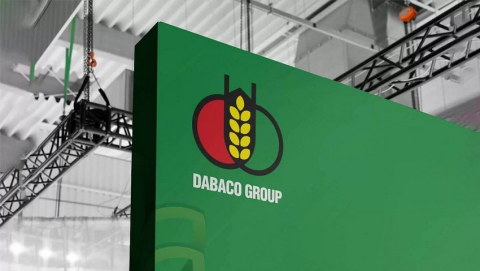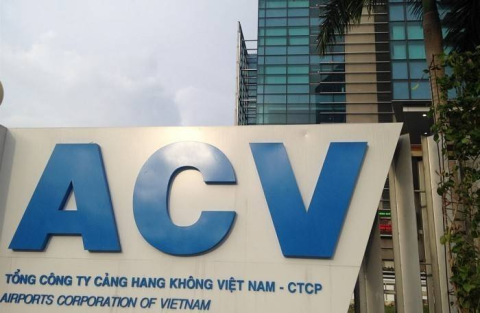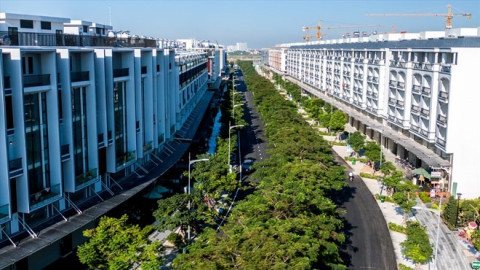From january 1, 2025, all homemade foods must be labeled with nutritional information
- 176
- Enterprise
- 08:37 18/04/2022
DNHN - The Ministry of Health recommended in the draft guiding circular on nutrition labelling for food that food items produced by manual techniques be labelled by January 1, 2025.

The dietary recommendations draft indicates the nutritional composition content, which includes the seven requirements listed below: Energy; Protein; Carbohydrates; Fat; Fatty; Saturated; Sodium. According to the Ministry of Health, the aforementioned suggestion is based on CODEX application guidelines from 2011, and CODEX application standards are presently completely implemented in 70% of nations and territories.
Based on the present state of Vietnamese food consumption as well as the existing illness trend in Vietnam, According to research and surveys, people in Vietnam are more likely to eat food that has been made and processed by machines. This has a significant influence on Vietnamese people's dietary intake and health.
At the same time, in recent years, Vietnam's illness pattern has tended to quickly increase in noncommunicable diseases such as hypertension, diabetes, cardiovascular disease, stroke, and obesity... One of the primary causes of this illness is a nutritional imbalance of various kinds.
Derived from the current practice of food nutrition labelling in Vietnam, where total energy accounts for 100% of the product, fat, protein accounts for 89.5 per cent, carbohydrate content accounts for 86.6 per cent, and salt content accounts for 21.1 per cent, and sugar accounts for 23.7 per cent.
Nutritional components, nutritional value, and how to write them concerning the recording of nutritional components and nutritional values: To ensure uniform guidance on how to label food nutrition, the draft circular proposes specific regulations on how to display each nutritional ingredient.
Together with the draft Circular and reference value guidance, they issue an appendix of guidelines on how to present nutritional information on food labels.
According to the draft, energy quantities should be given in kilocalories (kcal) or kilojoules (kJ). Protein, carbohydrates, total sugar, fat, and saturated fat content must be expressed in grams (g); sodium content must be expressed in milligrams (mg) per 100 g or 100 ml of food and expressed as a percentage (per cent) of the reference nutritional value according to the guidelines in Annex I of the draft.
Draft Appendix II says that the nutritional value of these and other nutritious elements should be given in numbers with full information. Ingredient and nutritional value information on food product labels must be comprehensible, readable, identifiable, and connected to the product's container and cannot be erased.
Roadmap for Nutrition Labeling ImplementationRegarding the implementation roadmap: To guarantee practicality, provide companies with time to study and develop their technical bases, equipment, employees, and technology for the implementation of registration laws.
The draft circular suggests the following implementation plan for nutrition labels: Rules say that food made, imported, traded, and circulated in Vietnam must be marked with food nutrition by January 1, 2024. By January 1, 2025, food goods made by hand must meet food labelling rules.
PV
Related news
- Connecting Leaders, Shaping the Future: Strategic Leadership Planning Meeting – CorporateConnections Hanoi A
- Sunlight - Unilever Vietnam Recognized for Outstanding Contributions to the National Initiative Supporting Women Entrepreneurs
- Deputy Prime Minister Nguyễn Chí Dũng: “The country’s major challenges weigh heavily on my mind — and we must resolve them together.
- Unitsky String Technologies signs cooperation agreements with three Vietnamese partners, opening a new direction for smart mobility and sustainable development
- When artists do business – livelihood is no poetry!
- Before the D‑day to abolish flat‑rate tax: Fear of technology and costs leave small traders struggling to adapt
- Vietnamese enterprises at a crossroads: the impact of a potential US–China deal
- "Digital technicians" must not be forgotten if Vietnam aims to meet its strategic goals
- HDBank: Impressive profit growth, leading in profitability and advancing international integration
- TNI King Coffee sued for over VND 5 Billion in unpaid debts
- VINASME and Jeonnam Technopark Sign MOU on technology cooperation, human resource training, and trade promotion
- Vietnamese entrepreneurs strengthen ASEAN connectivity in the digital iIntegration era
- Prime Minister: Vietnam aims to become a regional logistics hub
- Vietnam upgraded to Secondary Emerging Market by FTSE Russell
- Hanoi’s economy grows 7.92% in first nine months of 2025, FDI surges nearly threefold
- Vietnam’s strong gdp growth fails to ease labor market distress
- US tariffs on Brazil propel Vietnam’s pangasius into global spotlight
- VietLeap AI Accelerator launches: A strategic springboard for Vietnam’s AI startups
- CICON expands strategic alliances: A new step forward in Vietnam–Korea business connectivity
- What must Vietnamese enterprises do to maintain their position in the global supply chain?
Đọc thêm Enterprise
List of Vietnam’s 25 Best Workplaces 2025
Great Place To Work® has officially announced the 25 companies featured in the Best Workplaces in Vietnam™ 2025 ranking.
The ambitions of major enterprises in 2025
Major enterprises such as Dabaco, FPT, and KBC have set ambitious plans for 2025, demonstrating flexibility and sharpness in their business strategies.
What do domestic businesses need to overcome difficulties?
Strong and synchronized government support policies are crucial in helping Vietnamese enterprises navigate the current challenging period.
ACV achieved net profit surpassing VND 11,560 billion in 2024
Vietnam Airports Corporation (ACV) has recently announced its 2024 business results, reporting a net profit exceeding VND 11,560 billion, marking a 37% growth compared to the previous year.
Increasing taxes on pick-up trucks: The need to hear public opinion
The proposed tax increase on pick-up trucks is sparking debate. Many representatives argue that this decision could impact workers, businesses, and the domestic automotive market.
"The Vietnam-Korea Investment Cooperation Forum 2024 is a testament to the spirit of innovation and sustainable collaboration."
For Mr. Kim Ki-mun, Chairman of KBIZ, the Vietnam-Korea Investment Cooperation Forum 2024, scheduled for November 21, is not merely an event but also a testament to the spirit of innovation and sustainable collaboration between nations.
KBIZ's 60-year journey in building a solid foundation for South Korea's small and medium enterprise community
With over 60 years of establishment and development, the Korea Federation of SMEs (KBIZ) has emerged as a pioneering force in supporting the small and medium-sized enterprise (SME) community in South Korea.
What categories are included in the additional audit subjects?
On the morning of November 7, the National Assembly discussed the draft amendment of several articles across seven laws, with a particular focus on adding new audit subjects.
Institutional obstacles "tie up" enterprises and challenge economic growth
During a session discussing the 2024 socio-economic development plan, National Assembly deputies emphasized that institutional barriers remain a significant "obstacle" for businesses.
More than 1,000 new real estate businesses established in Ho Chi Minh City, transactions grow
In the first nine months of 2024, Ho Chi Minh City's real estate market witnessed the establishment of over 1,000 new businesses and recorded 1,600 property transactions, signaling a positive recovery trend.











